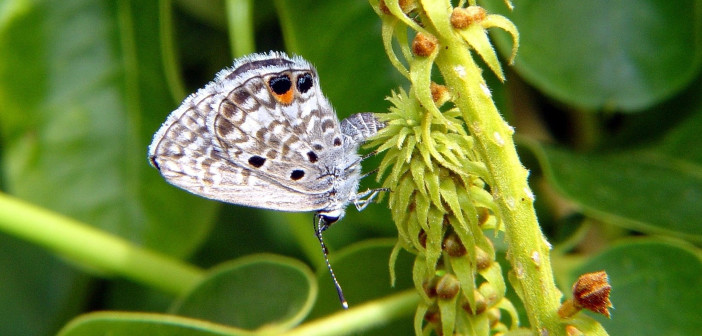The 2008 research report* from the International Union for Conservation of Nature (IUCN) indicates about one in five species in the world is threatened with extinction. This includes about one in eight birds, one in four mammals and one in three amphibian species, and one in five sharks and rays. Marine animals are at risk from pollution and overfishing, land animals from habitat loss and hunting (particularly in South and Southeast Asia). Although most threats are caused by humans, a few species are disappearing due to disease.
The following is a list of some of the animals that are endangered or already extinct. And, a few success stories. You can read about more endangered or extinct species on this page.
Birds
Bald Eagle (Haliaeetus leucocephalus): From 100,000 down to 800 by the 1960s. The banning of the pesticide DDT and, to some degree, habitat protections have produced one of the Endangered Species Act’s (ESA) success stories. Today, over 7,000 pairs soar over the lower 48 states.
Greater Sage Grouse (Centrocercus urophasianus): Numbers falling due to habitat loss in the northern Rockies. Down to between 100,000 and 500,000.
Northern Spotted Owl (Strix occidentalis): 15,000 remain, due to logging in their old-growth forest habitat.
Butterflies
Miami Blue Butterfly (Cycl. thomasi bethunebakeri): 45 to 50 adults left, most living in Bahia Honda State Park, Florida.
Mammals
African Elephant (Loxodonta spp.): Successful conservation efforts in Africa are keeping numbers up in spite of continued poaching.
Bighorn Sheep (Ovis canadensis): Less than 70,000, down from 2 million, due to hunting, livestock grazing, habitat loss.
Black-footed Ferret (Mustela nigripes) (Feb. 2009): Rancher complaints led to Kansas officials poisoning a large prairie dog area in Logan County, Kansas, home to a group of recently introduced, captive-bred Black-footed Ferrets. This, despite a restraining order. Prairie Dogs are the primary source of food for the highly endangered ferret.
Dama Gazelle (Gazella dama): Fewer than 300 remain, down 80 percent over the last 10 years. Once widespread in the Sahara Desert.
Hawaiian Monk Seal (Monachus schauinslandi): About 1,200 individuals remain, due to entanglement in fishing nets, animal predation, human disturbance, high male to female ratio of births.
Iberian Lynx (Lynx pardinus): As few as 100 left, down from 4,000 in 1960. A southern Europe species. Habitat loss, poisoning, poaching, road casualties. In 2005, for the first time, some (three) were born in captivity.
Père David’s Deer (Elaphurus davidianus): Extinct in the wild. Last wild herd eaten by Western and Japanese troops in China during the Boxer Rebellion of 1900-1901.
Polar Bear (Ursus maritimus): 20,000 to 25,000 are threatened by loss of habitat.
Primates: Half of the world’s 634 species are facing extinction due to habitat loss and hunting. Especially at risk: gibbons, leaf monkeys and langurs in Vietnam and Cambodia, Red Colobus Monkeys in Africa.
West Indian Manatee (Trichechus manatus): 3,000 remain. Many are killed each year by boats and canal locks; 53 such deaths in 2008.
White-tailed Prairie Dog (Cynomys leucurus): 118,000 left in Western U.S. Currently under government review.
Wolverine (Golo luscus): Scientists warn they face a high risk of extinction, but government has not given protection under the ESA.
Fish
Blue Pike (Stizostedion vitreum glaucum): Extinct since 1983 due to overfishing. At one time made up more than 50 percent of the commercial catch in the southern Great Lakes.
Sperm Whale (Physeter macrocephalus): Down to 7,000 from an estimated one million, due to over-hunting. The largest toothed animal in the world.
Others
| California Red-legged Frog (Rana draytonii): No more than a few thousand remain. Urban development has taken more than 70 percent of their natural habitats |
| Caspian Seal (Pusa caspica): Critically endangered |
| Cuban Crocodile (Crocodylus rhombifer): Critically endangered. |
| Holdridge’s Toad (Bufo holdridgei): Recently declared extinct, thought to be the result of a fungal disease affecting amphibians worldwide. |
| Oahu Tree Snails (Achatinella spp.): 41 species endangered by predators and deforestation, some may already be extinct. Captive-breeding programs are trying to save them. |
| Tasmanian Devil (Sarcophilus harrisii): The population of this marsupial has fallen 60 percent over the past 10 years due to a fatal cancer of the face. |
*Top photo: Miami Blue Butterfly (Cyclargus thomasi bethunebakeri). (© Holly Salvato / USFWS; cc by 2.0
More reading:
*Homepage: UCN Red List of Threatened Species
Mammals on the IUCN Red List
Amphibians on the IUCN Red List
How to design a backyard wildlife habitat





